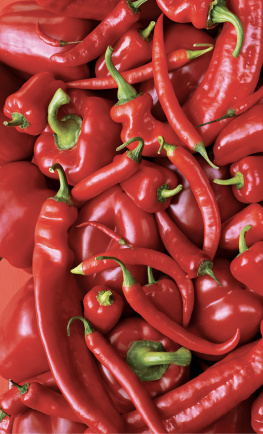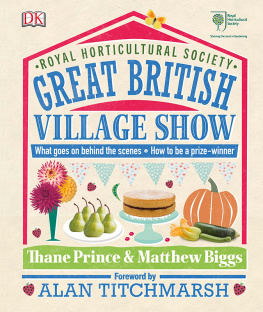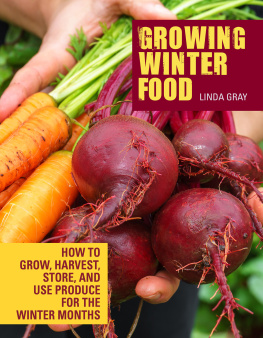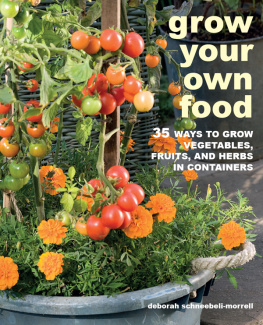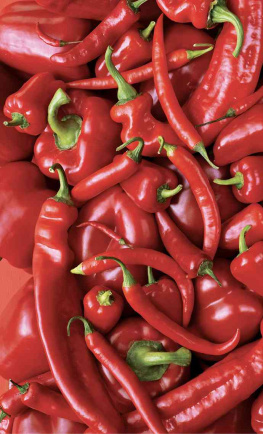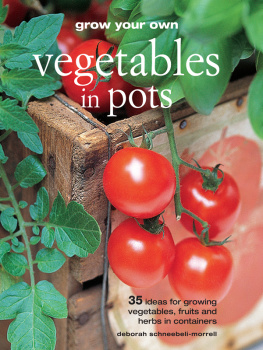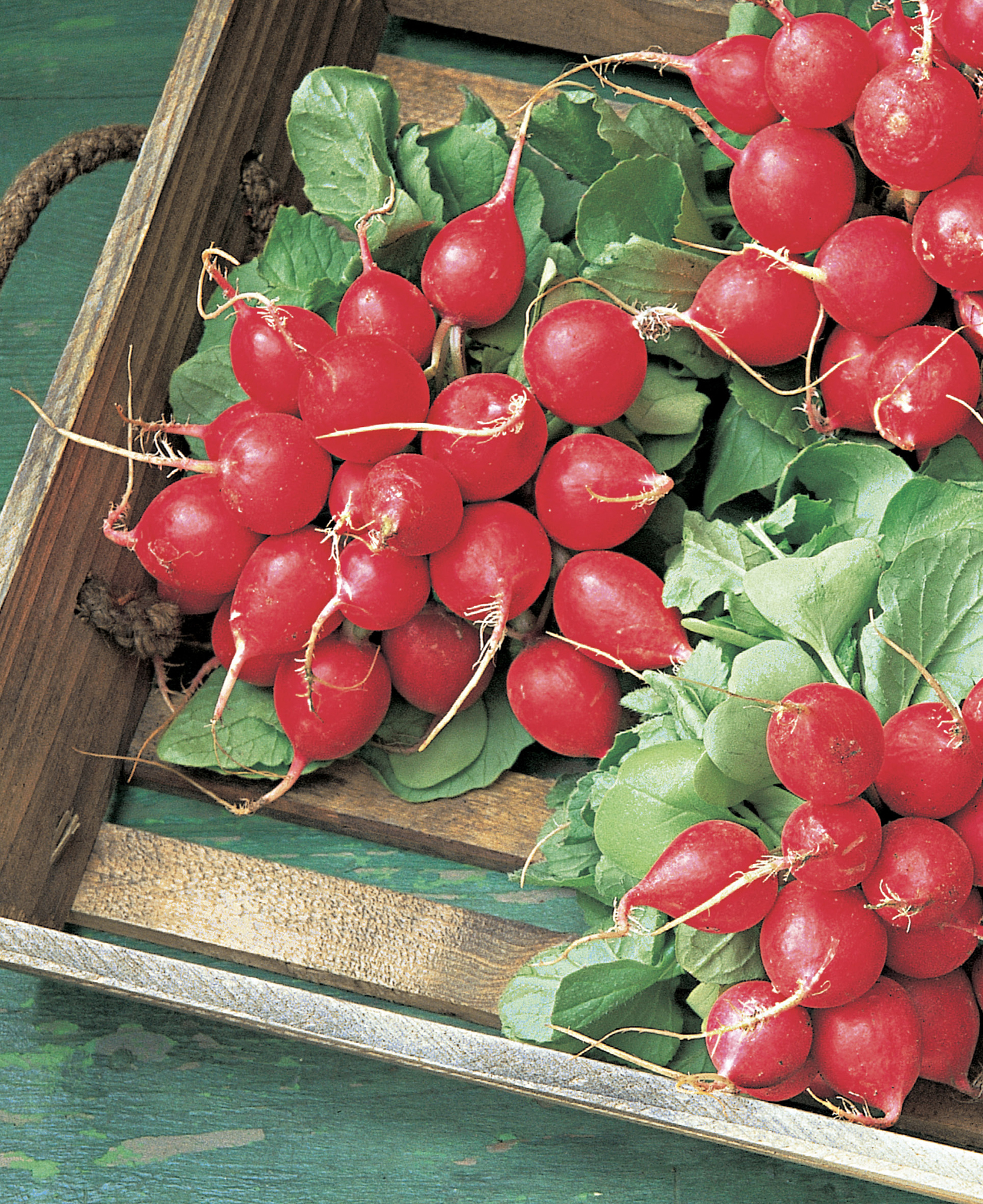To Gill, Jessica, Henry and Chloe
FOREWORD BY JEAN-CHRISTOPHE NOVELLI
As a Frenchman with Italian ancestors, the food traditions of these two beautiful countries run deep in my veins. Both in France and in Italy, cooking with fresh, local ingredients is a given, a part of everyday life, and when I was a child the vegetable plot was at the centre of many family activities. That, and the kitchen, of course! Even now, freshly dug-up vegetables conjure up pleasant childhood memories of time spent together tending and nurturing our plants into bearing produce, and cooking with the results of our labour.
In the kitchen, no one, from Michelin-starred chefs to maman Novelli, can fully demonstrate their skills without the finest, freshest ingredients to work with. In my kind of cooking, meat and fish are often the heroes of a dish, but they would be nothing without a supporting cast of vegetables to provide colour, flavour and texture.
There is no question that home-grown vegetables taste better than anything bought from a shop you only have to savour the aroma of a freshly picked tomato to realise the difference. Grow them in your garden and you minimise the time between harvesting and cooking; you take away the need to chill them, handle them excessively and haul them over long distances. It is easy to see why they taste so amazing.
Matt and I started working together when he joined the Novelli Academy, sharing his expertise on vegetable gardening with my students and bringing it into practice in the Academys kitchen garden. Its very important to me that my students learn to appreciate the finesse and flavour that home-grown vegetables add to a dish my beetroot gazpacho always tastes best when I use beets from my own vegetable patch!
The Complete Book of Vegetables shows the incredible range of vegetable varieties available from seed catalogues these days more than you will ever find in the shops. Grow your own and you have a world of culinary experiences in your garden; a crop of sweet peppers, for example, could take you on a culinary journey from Frances delicious piperade, past the indulgent pimientos fritos of Spain to a hearty goulash in Hungary. And thats just one vegetable
I am very pleased that its becoming more and more popular to grow your own vegetables and with the Complete Book of Vegetables anyone can have a go. Matts brilliant instructions show you how easy it can be, whether you have a tiny windowsill or a large garden to work with. Thanks to Matt, youll know exactly what to do and when; even when a family of slugs comes to visit your patch, you will have a green and friendly solution to hand. Follow his advice and not only will you be eating your own produce in no time and believe me, there is nothing quite like it but it will also become a pleasure to manage your five a day.
Bon apptit!
Jean-Christophe Novelli
INTRODUCTION
We all have to eat to survive, and there is nothing like home-grown vegetables to increase that pleasure. To some people eating was, and still is, a rather functional process, while the more privileged have developed it into a cultural experience and a pastime to be enjoyed. Plants are the basis of the food chain even for meat eaters and vegetables make a meal more delicious. They are visually attractive, nutritious and essential for a balanced diet, adding a range of flavours and interest to a meal. The greater the choice of vegetables we have, the more exciting our culinary experience will be.
For centuries, vegetable gardens throughout the world have been the focal point of family and community survival. From the Middle Ages onwards in rural Europe, vegetables were grown of necessity and villagers cultivated turnips, leeks, kales and cabbages as part of their simple diet. Later, cottage gardens contained a mixture of vegetables, herbs and flowers, for providing food, medicine, flavouring, ornament and a nectar supply for bees. Where every plant had a part to play, flowers grown only for their ornamental value were considered a luxury.
This philosophy still prevails in France, where vegetable gardening has been refined to create the potager or ornamental vegetable garden, satisfying an artistic and practical need. The finest example exists at the chateau garden at Villandry in the Loire Valley, where formal borders are embellished with a magnificent array of vegetables. Why not try this on a smaller scale at home? There is a wholesome beauty in a display of vegetables a row of vibrantly coloured ruby chard, frilled January King cabbages, the aristocratic foliage of globe artichokes all have a unique yet distinctive charm. I hope that this book encourages you to experiment further.
The French also revolutionised eating, changing it into an artistic experience in which every meal was considered an important occasion. After the French Revolution and the fall of the aristocracy, many chefs finding themselves unemployed opened restaurants and, in time, social eating became widespread. For the wealthy, fine food had always provided an opportunity to indulge in pleasures both sensual and cultural; a meal was the ideal occasion to savour the exquisite flavour of fresh vegetables, meat, fish, good wine and fruit as well as a time for conviviality and friendship. The social aspect of eating is still an essential part of the pleasure, and a satisfying meal in good company should last for many hours. It is, of course, also an opportunity for the chef to show his or her skill in the preparation and presentation of food.
But what would a meal be without vegetables? They add finesse to a dish that meat alone cannot provide. And where would a cook be without recipes? Where the gardeners skill finishes, culinary creativity takes over. While researching this book I became aware of exciting developments in cooking with vegetables, stimulated by the increasing popularity of vegetarianism. Such new ideas elevate even the most basic crops to tantalising heights: I hope you will find the recipes given here tempting.
Too many people treat the ubiquitous vegetable with indifference rather than appreciation. Yet these loyal servants not only provide our daily food, but also help maintain health and cure ills. It is believed that Henry VIII of England (14911547) died from malnutrition due to a predominantly carnivorous diet! Some vegetables have an ancient and fascinating past, having been developed over many centuries, while others have even influenced social and political history most notably our good friend, the common potato.
During the Industrial Revolution many people were uprooted from their rural heritage as they turned to the cities. Now many of those living in towns and cities are seeking their rural past, returning to their backyards or community gardens. There is certainly a resurgence of interest in vegetable growing. Whats more, an increasing number of people are determined to grow vegetables organically, free from health-damaging chemicals, taking the opportunity to be in touch with the soil while enjoying fresh air and exercise. Vegetable growing is more uplifting and undoubtedly more productive than a visit to the gym what can be a better reward for your efforts than a tasty meal with fine home-grown vegetables?
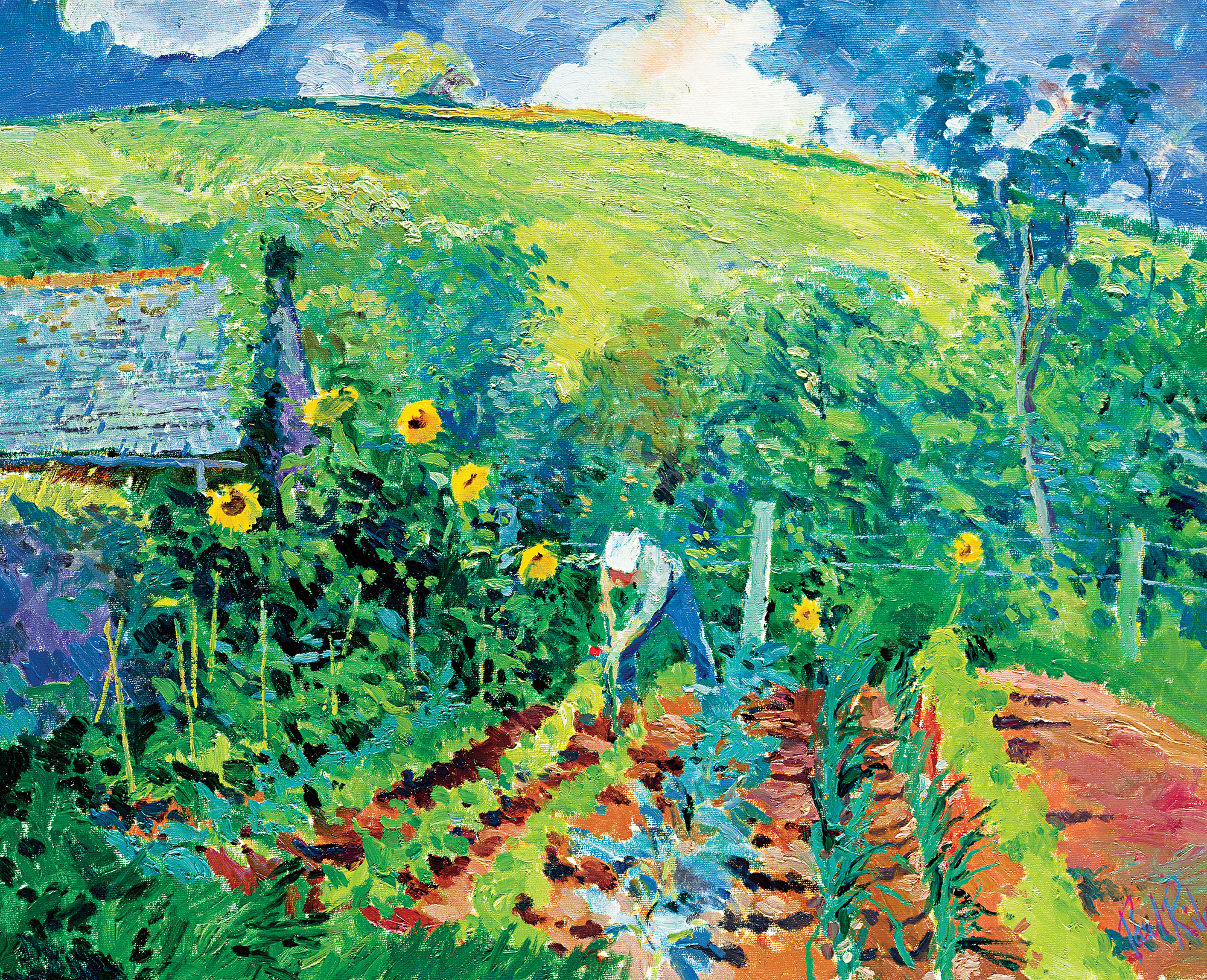
The Vegetable Garden, Coombe by Paul Riley, 1988
I heartily recommend that everyone tries their hand at growing vegetables. You only have a balcony? Use buckets, boxes, tea chests or pots almost any available container will do. Grow mini vegetables or dot them among your flowers. Are you uninspired by the same old veg? Experiment with lesser known varieties, oriental vegetables or exotics such as okra; enliven your salads with white cucumbers, bi-coloured beetroot, red spring onions and red-fleshed radishes. With careful planning, your vegetable garden should be productive all year round, providing an endless supply of fresh vegetables and filling your freezer. And who would argue that a commercially produced vegetable, jaded after its journey from field to supermarket, is comparable with those eaten straight from the garden, bursting with vitality and packed with goodness and flavour?

